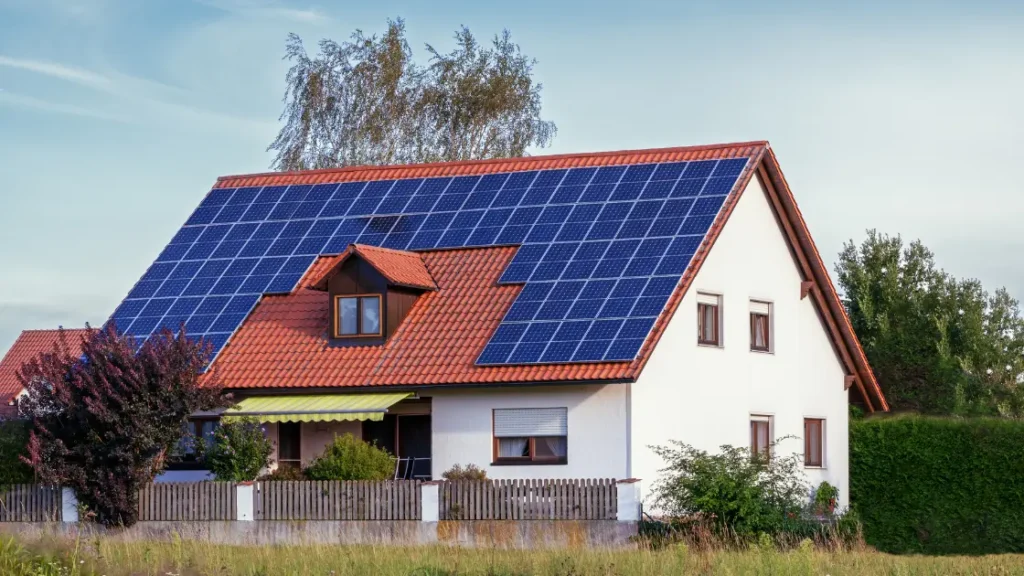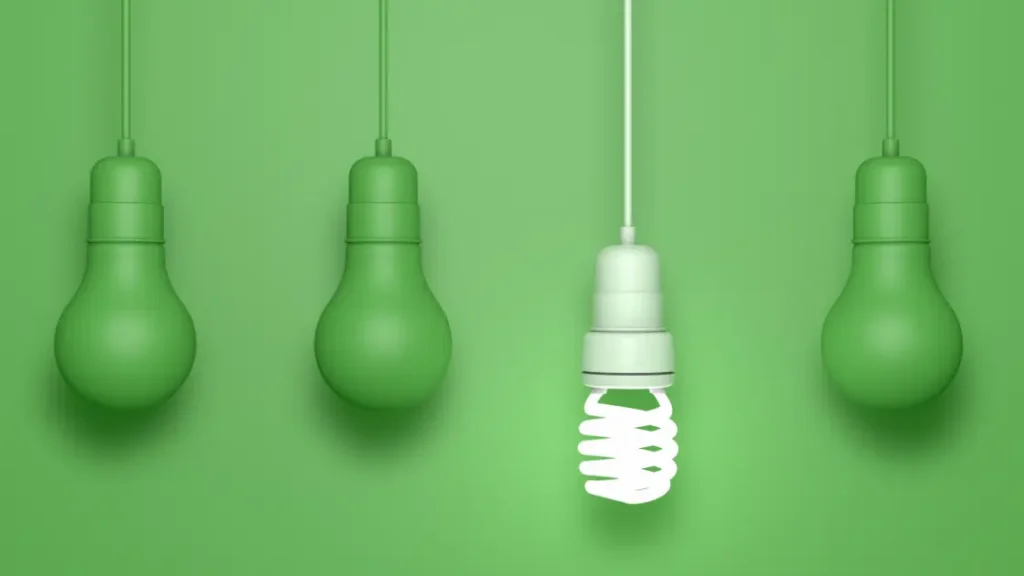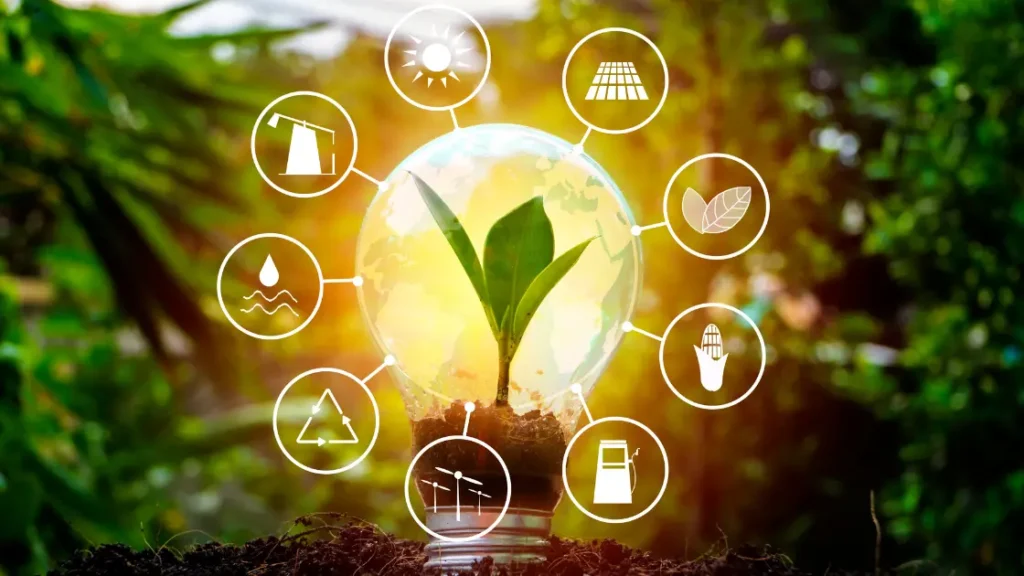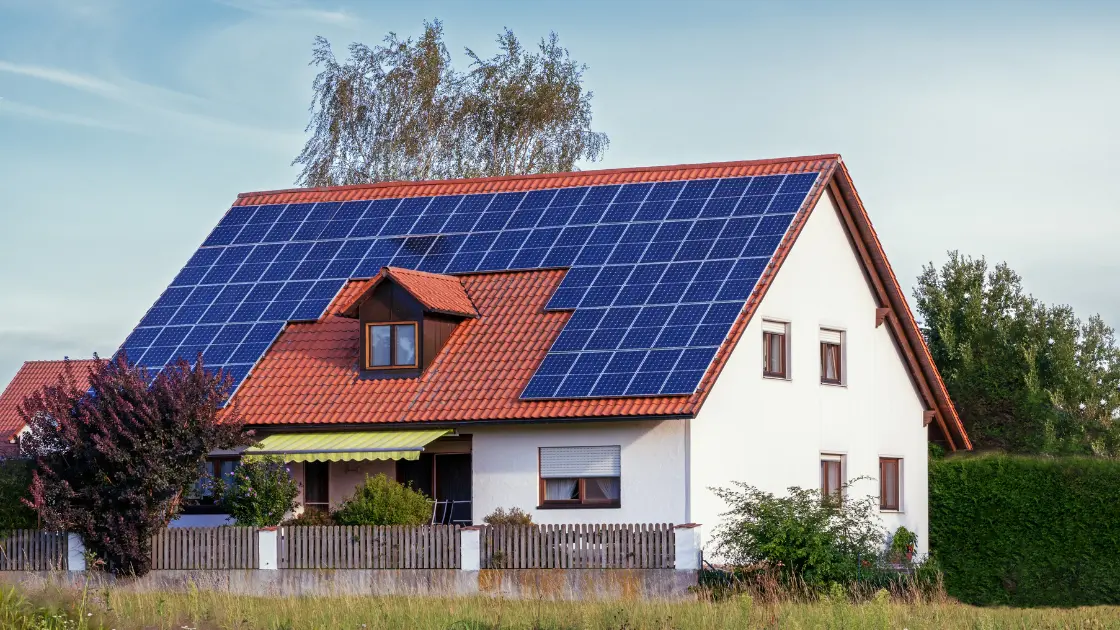Building a self sustaining home involves incorporating renewable energy sources and sustainable building materials. With growing concerns about the environment and energy consumption, more and more people are looking for ways to live in a self-sustaining home.
These homes are designed to minimize their environmental impact by utilizing renewable energy sources and sustainable building materials.
In addition to reducing energy consumption and waste, self-sustaining homes also strive to be independent of traditional utility providers.
This means they generate their electricity, collect and reuse rainwater, and incorporate various energy-efficient technologies.
Table of Contents
Building a Self Sustaining Home
Building a self-sustaining home requires careful planning, investment in appropriate technologies, and a commitment to sustainable living.

However, the long-term benefits of reduced energy costs and a smaller carbon footprint make it an attractive option for many homeowners.
Understanding Energy Efficiency
Learn about energy-efficient strategies for constructing a self-sustaining home, and minimizing environmental impact. Enhance sustainability through efficient insulation and renewable energy sources.

Energy efficiency is an essential aspect of building a self-sustaining home. By optimizing the energy consumption of your household, you can reduce your carbon footprint, save money on utility bills, and contribute to environmental sustainability. In this section, we will delve into the definition and importance of energy efficiency, as well as explore the numerous benefits it brings to homes.
Definition And Importance Of Energy Efficiency
Energy efficiency refers to using less energy to accomplish the same tasks, without compromising comfort or productivity. It involves adopting practices, technologies, and products that minimize energy waste, thereby lowering overall energy consumption.
In the context of homes, energy efficiency plays a vital role in reducing reliance on fossil fuels and conserving natural resources.
By employing energy-efficient measures, homeowners can significantly decrease their impact on the environment and help combat the challenges of climate change. Not only does this contribute to a sustainable future, but it also leads to substantial cost savings in the long run.
Benefits Of Energy Efficiency In Homes
Energy efficiency offers a wide range of benefits when incorporated into residential properties. Let’s explore some of the key advantages:
1. Lower Energy Bills: One of the most significant benefits of energy efficiency is reduced utility expenses. By optimizing how your home uses energy, you can enjoy substantial savings every month, as less energy is wasted.
2. Environmental Preservation: Embracing energy efficiency practices results in a reduced ecological footprint. Less energy consumption means less reliance on fossil fuels, mitigating air and water pollution while conserving natural resources.
3. Enhanced Comfort: Energy-efficient homes often feature improved insulation, efficient heating and cooling systems, and proper ventilation. These factors contribute to a more comfortable living environment, irrespective of the weather conditions outside.
4. Increased Property Value: Investing in energy efficiency can enhance the value of your home. As sustainability becomes increasingly important to homebuyers, energy-efficient properties are perceived as more desirable and tend to command higher prices.
5. Health Benefits: Energy efficiency measures, such as proper ventilation and air purification systems, can lead to healthier indoor environments. These features help mitigate indoor air pollutants, reducing the risk of respiratory issues and allergies.
Incorporating energy-efficient practices into your home is a win-win situation. You reduce your environmental impact while enjoying long-term cost savings and an improved quality of life.
By understanding and embracing energy efficiency, you take a significant step towards building a self-sustaining home.
Designing An Energy Efficient Home
When it comes to building a self-sustaining home, one of the key factors to consider is designing an energy efficient space.
By implementing certain principles and using the right materials, you can significantly reduce energy consumption and create a more comfortable and environmentally friendly living environment.
In this article, we will explore some important aspects of designing an energy efficient home, including passive design principles, optimal insulation and weatherization, and the use of sustainable building materials.
Passive Design Principles
Passive design principles involve utilizing the natural elements of the environment to minimize energy needs.
By strategically orienting your home and designing it with proper shading and ventilation, you can significantly reduce the need for artificial cooling and heating systems, ultimately lowering your energy consumption.
Optimal Insulation And Weatherization
Insulation and weatherization play a crucial role in maintaining a comfortable indoor temperature while minimizing energy loss.
By using high-quality insulation materials and sealing any potential air leaks, you can prevent the escape of heat during colder months and minimize the infiltration of hot air during warmer months.
This helps maintain a consistent temperature inside your home, reduces the need for heating and cooling devices, and ultimately lowers your energy bills.
Sustainable Building Materials
In addition to passive design principles and insulation, using sustainable building materials can further enhance the energy efficiency of your home.
Opt for eco-friendly materials like reclaimed wood, recycled metal, and natural insulation materials like cellulose or sheep’s wool.
These materials not only have lower embodied energy but also promote healthier indoor air quality, reducing the need for additional energy-consuming systems such as air purifiers or dehumidifiers.
Energy Efficient Heating And Cooling
When it comes to building a self-sustaining home, one of the most important aspects to consider is energy efficient heating and cooling.
By implementing smart technologies and high-efficiency systems, homeowners can significantly reduce their energy consumption and take a step towards a more sustainable lifestyle.
High-efficiency HVAC Systems
Incorporating a high-efficiency HVAC (Heating, Ventilation, and Air Conditioning) system in your self-sustaining home can have a remarkable impact on your energy consumption.
These systems are designed to maximize efficiency, reduce waste, and ensure optimal temperature control throughout your living space.
With their advanced features and state-of-the-art technology, high-efficiency HVAC systems can effectively heat or cool your home while using less energy compared to traditional systems.
By investing in this energy-saving solution, you not only make your home more environmentally friendly but also enjoy significant cost savings in the long run.
Geothermal Heating And Cooling
Geothermal heating and cooling is a revolutionary solution that taps into the earth’s natural energy to efficiently heat or cool your home.
By harnessing the stable temperature of the ground, geothermal systems eliminate the need for fossil fuels and reduce greenhouse gas emissions.
Using a series of underground pipes, a geothermal system extracts heat from the earth during winter, delivering it as warm air throughout your home.
In the summer, it does the opposite, removing heat from your living space and transferring it back into the ground.
This sustainable approach to heating and cooling not only contributes to a greener environment but also provides homeowners with year-round comfort and considerable energy savings.
Smart Thermostats And Zoning
To further enhance energy efficiency in your self-sustaining home, consider incorporating smart thermostats and zoning systems. These innovative technologies allow you to precisely control the temperature in each room or zone of your house, minimizing energy waste and optimizing comfort.
Smart thermostats are programmable devices that learn your daily routine and adjust the temperature accordingly.
They can be easily controlled via a smartphone app, allowing you to schedule heating or cooling based on your needs. This smart feature ensures that energy is not wasted on unused or unoccupied areas of your home.
Zoning systems complement smart thermostats by dividing your home into individual zones with their separate temperature settings.
This means you can have different temperatures in various parts of your house, ensuring personalized comfort while saving energy.
In conclusion, energy-efficient heating and cooling are a crucial aspect of building a self-sustaining home. By incorporating high-efficiency HVAC systems, geothermal heating and cooling, as well as smart thermostats and zoning, homeowners can significantly reduce their carbon footprint and enjoy the benefits of a sustainable living environment.
Renewable Energy Sources
Building a self-sustaining home? Opt for renewable energy sources that offer sustainability and energy independence. Solar panels, wind turbines, and geothermal systems can help minimize your ecological footprint while providing a continuous and cost-effective energy supply for your home.

Solar Power Systems
One of the most popular and widely used forms of renewable energy sources is solar power. Solar power systems harness the energy from the sun and convert it into electricity that can be used to power your self-sustaining home.
These systems consist of solar panels, which are made up of photovoltaic cells that convert sunlight into direct current (DC) electricity. The electricity generated from these solar panels can then be used to power various appliances and devices within your home or stored in batteries for later use.
- Solar power systems are easy to install and require little maintenance.
- They provide a reliable and consistent source of electricity, even on cloudy days.
- By utilizing solar power, you can reduce your dependency on traditional power grids and lower your carbon footprint.
- Government incentives and tax credits are often available for homeowners who choose to install solar power systems.
Wind Turbines
Another effective renewable energy source for a self-sustaining home is wind power. Wind turbines capture the kinetic energy from the wind and convert it into electrical energy.
These turbines consist of large blades that spin when the wind blows, generating power that can be used to supplement or even replace the electricity provided by the traditional power grid.
- Wind turbines are a reliable and abundant source of energy, especially in areas with consistent winds.
- They can be installed on your property and provide a continuous source of renewable energy.
- Proper positioning of wind turbines is crucial to maximize their efficiency and minimize any noise pollution they may produce.
- Like solar power systems, wind turbines can also reduce your carbon footprint and save you money in the long run.
Hydroelectricity
Hydroelectric power is another viable option for those looking to generate renewable energy. It harnesses the power of flowing water, such as rivers or streams, to produce electricity.
Hydroelectric installations typically involve dams or falls that direct the force of the water onto turbines, generating kinetic energy which is then converted into electrical energy.
- Hydroelectricity is a long-established and reliable form of renewable energy.
- It can provide a constant source of electricity when the water source is reliable.
- One consideration with hydroelectric power is its impact on the local ecosystem and the need for an appropriate location with access to flowing water.
- However, if these factors are taken into account, hydroelectric power can be a sustainable and efficient source of energy for your self-sustaining home.
Biomass And Biogas
Biomass and biogas are renewable energy sources derived from organic matter. Biomass refers to any plant or animal material that can be used to produce energy, such as wood, crops, or agricultural waste.
Biogas, on the other hand, is a mixture of gases produced through the breakdown of organic matter, such as sewage, food waste, or manure.
- Biomass can be burned directly or converted into liquid or gaseous fuels to produce heat or electricity.
- Biogas can be used as a fuel for heating, cooking, or generating electricity.
- Both biomass and biogas can provide a sustainable source of energy while also reducing waste and greenhouse gas emissions.
- However, it’s important to note that the availability of biomass and biogas as energy sources may vary depending on your location and access to suitable organic materials.
Energy Monitoring And Management
Building a self-sustaining home starts with energy monitoring and management. Keep track of your energy usage and optimize efficiency to create an environmentally friendly and cost-effective living space.
Smart Meters And Energy Monitoring Systems
When it comes to building a self-sustaining home, one of the key aspects to consider is energy monitoring and management.
Smart meters and energy monitoring systems play a crucial role in understanding and optimizing energy usage, allowing you to make informed decisions and reduce wastage.
These innovative devices provide real-time data on your electricity consumption, empowering you to take control of your energy usage and its impact on the environment.
Smart meters are a significant upgrade from traditional meters as they offer detailed insights into energy consumption patterns.
These meters can provide information on how much energy is being used at specific times of the day and even monitor the power consumption of individual appliances.
By analyzing this data, you can identify areas where energy is being wasted and make changes to reduce unnecessary consumption.
Energy monitoring systems take the benefits of smart meters a step further by allowing you to access this valuable data remotely.
With a user-friendly interface accessible through your smartphone or computer, you can monitor your energy usage in real-time, even when you’re away from home.
This level of visibility enables you to track your energy consumption trends, set energy-saving goals, and make adjustments accordingly.
Home Automation And Energy Management Systems
In addition to smart meters and energy monitoring systems, home automation, and energy management systems are crucial components of a self-sustaining home.
These systems integrate control over various energy-consuming devices and appliances, allowing you to automate and optimize their usage.
Home automation systems empower you to schedule and control when appliances and devices are turned on and off, ensuring energy is used only when needed.
By utilizing programmable thermostats, for example, you can set your heating and cooling systems to run at specific times based on your occupancy patterns. This way, you’re not wasting energy by heating or cooling an empty home.
Beyond scheduling, energy management systems offer advanced features such as load shedding and load shifting. Load shedding refers to the process of automatically reducing non-essential energy consumption during peak demand periods, helping you avoid high rates and grid strain.
Load shifting, on the other hand, allows you to shift energy-intensive tasks to off-peak hours when electricity rates are typically lower.
By combining smart meters, energy monitoring systems, and home automation technology, you can create a comprehensive energy management solution tailored to your self-sustaining home. These systems work seamlessly together, enabling you to monitor, optimize, and control your energy usage efficiently, leading to reduced monthly utility bills, lower environmental impact, and a more sustainable lifestyle.
Water Efficiency And Conservation
Water Efficiency and Conservation is an essential aspect of building a self-sustaining home. By implementing various strategies, such as efficient plumbing fixtures, rainwater harvesting, and greywater recycling, homeowners can significantly reduce their water consumption and contribute to a more sustainable environment. Let’s explore these initiatives in more detail.
Efficient Plumbing Fixtures
Utilizing efficient plumbing fixtures is a crucial step towards saving water in your home. By installing low-flow faucets, showerheads, and toilets, you can minimize water wastage without compromising your comfort. These fixtures are designed to limit the flow rate while ensuring optimal performance, resulting in substantial water savings. Additionally, incorporating sensor-operated faucets and dual-flush toilets can further enhance water efficiency by only using the necessary amount of water for each use.
Rainwater Harvesting
Rainwater harvesting is a simple and effective method to collect and store rainwater for various non-potable uses. By installing a rain barrel or a more sophisticated rainwater collection system, you can harness nature’s gift and reduce your reliance on freshwater sources. This harvested rainwater can be used for activities like irrigation, washing cars, or even flushing toilets. Implementing rainwater harvesting not only conserves water but also helps alleviate the burden on public water supply systems during periods of drought.
Greywater Recycling
Greywater recycling is another smart strategy to conserve water in your home. Greywater refers to the non-potable water generated from activities like showering, laundry, and dishwashing. Instead of letting this water go to waste, it can be treated and reused for purposes such as landscape irrigation or toilet flushing. By implementing a greywater recycling system, you can effectively reduce your freshwater consumption and contribute to a more sustainable water usage cycle.
Financial Incentives And Return On Investment
When it comes to building a self-sustaining home, it’s important to consider the financial incentives and return on investment. By harnessing renewable energy sources and implementing energy-efficient practices, homeowners can not only reduce their carbon footprint but also enjoy long-term cost savings. In this section, we will explore the government rebates and tax credits available, the potential long-term cost savings, and how to evaluate the return on investment.
Government Rebates And Tax Credits
One of the main financial incentives for building a self-sustaining home is the availability of government rebates and tax credits. Governments at various levels often have programs to encourage homeowners to adopt sustainable practices. These incentives can offset the initial costs of installing renewable energy systems such as solar panels or geothermal heating systems. Additionally, homeowners may be eligible for tax credits based on their energy efficiency upgrades, further reducing the overall investment.
Long-term Cost Savings
Building a self-sustaining home not only benefits the environment but also offers significant long-term cost savings. By reducing dependence on traditional energy sources, homeowners can save money on monthly utility bills. Solar panels, for example, can generate electricity and potentially eliminate the need to purchase electricity from the grid. Moreover, energy-efficient features such as insulation upgrades, LED lighting, and efficient appliances can further reduce energy consumption, leading to lower energy bills over time.
Evaluating Return On Investment
When considering the financial aspects of building a self-sustaining home, evaluating the return on investment is crucial. To determine the return on investment, homeowners need to compare the upfront costs of implementing sustainable features with the long-term savings they will generate. Factors to consider include the cost of renewable energy systems, potential energy savings, and the estimated payback period. Conducting a thorough cost-benefit analysis will help homeowners make informed decisions and ensure that the investment in a self-sustaining home is financially viable in the long run.
Conclusion
To create a self-sustaining home, it is essential to focus on energy efficiency, sustainable material choices, and waste reduction. By incorporating smart technology, renewable energy sources, and water conservation systems, homeowners can significantly reduce their carbon footprint. Additionally, practicing sustainable gardening techniques and utilizing rainwater harvesting methods further contribute to making the home self-sufficient.
Embracing these eco-friendly practices not only benefits the environment but also enhances the overall quality of life. Start building your self-sustaining home today and be a part of the sustainable living movement.






